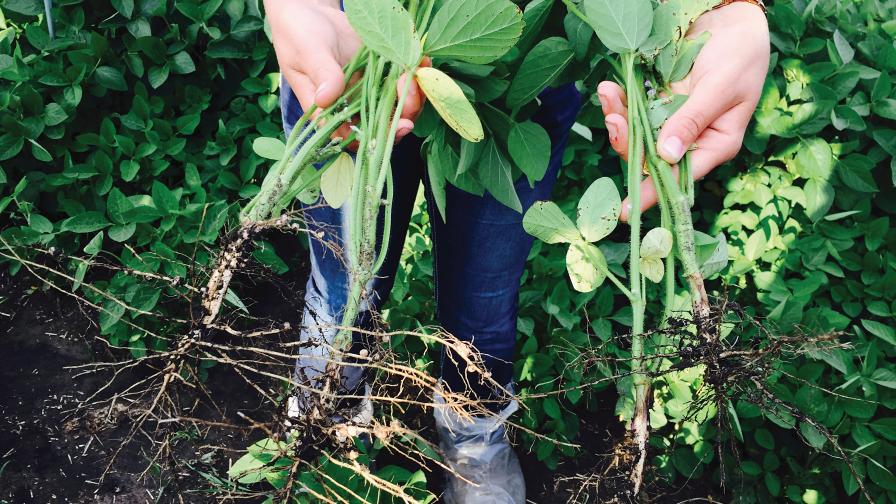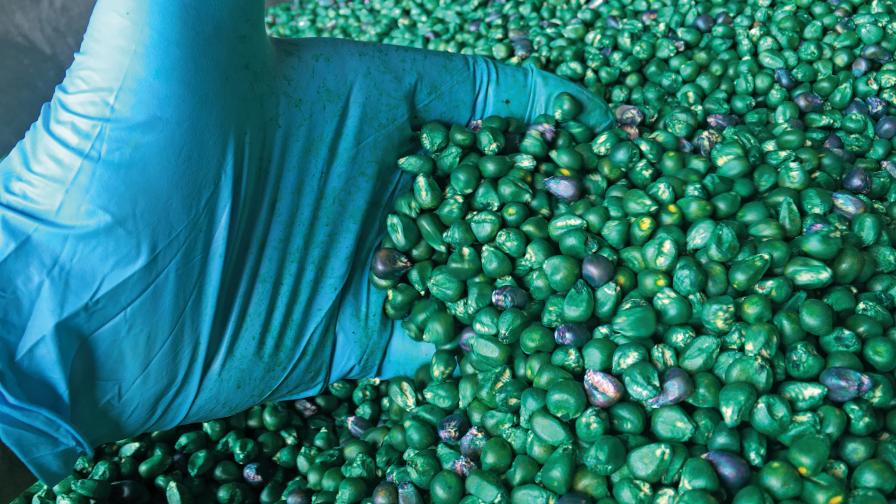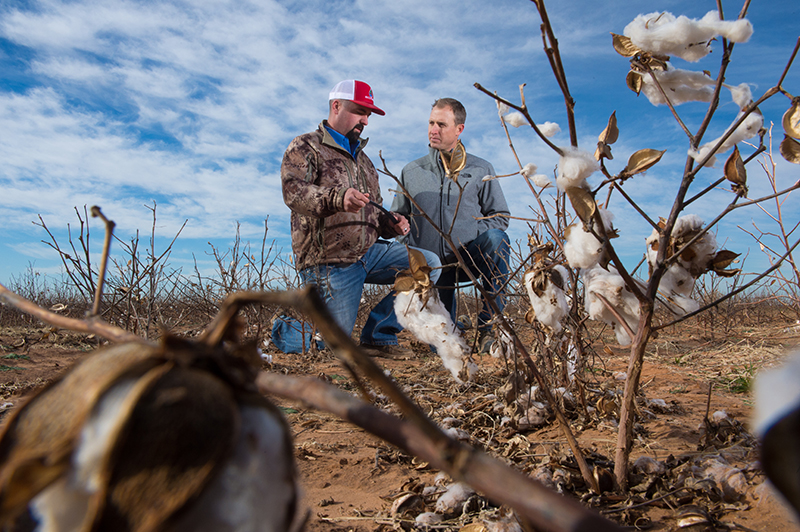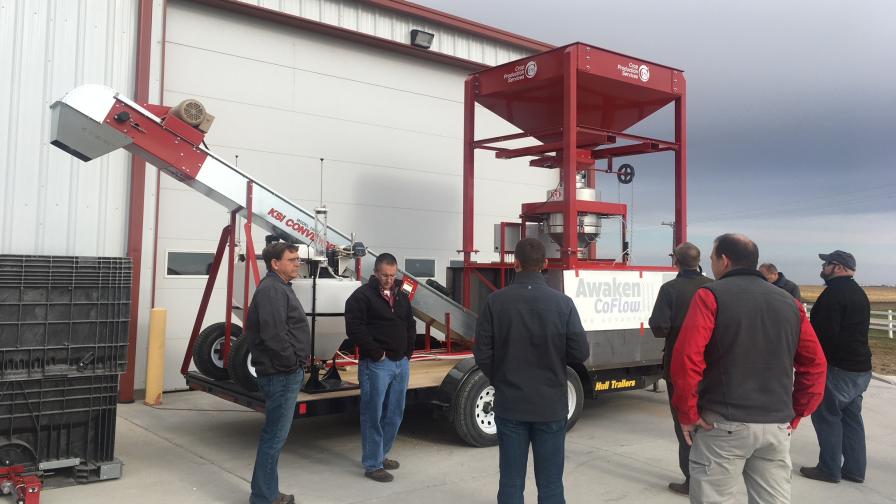Nutritionals, Corn Seed Treatments Trending Up in a Downstream Market

A non-treated soybean plant (left) infected with soybean cyst nematode vs. a plant with Nutrien Ag Solutions base seed treatment.
Marty Robinson, Senior Marketing Manager of Seed Treatments North America with Nutrien Ag Solutions, has handled seed treatment with North America’s largest ag retailer since 2012.

Marty Robinson, Nutrien Ag Solutions
The retailer services markets across 49 U.S. states and throughout western Canada. The mega-retailer approaches its downstream seed treating strategy with a two-pronged approach.
“It’s a balance of two things,” Robinson says. “First, we’ve got to make sure our growers have the correct active ingredient and blend offerings available to them, and agronomics is always the primary driver. Second, as a large retail network, we can leverage the size of our business in product development, production, and procurement, allowing us to share economic opportunities with our grower customers.
In the upcoming season, Robinson expects a familiar crop protection duo will comprise most of the millions of acres of soybean seed treatment that the group’s retail outlets will apply this winter.
“We believe that in many cases the best offering is still a fungicide and insecticide combination,” he says.

With increased handling safety in mind, Nutrien Ag Solutions developed a proprietary liquid polymer coating for its corn treatments.
“Insecticide use has been somewhat challenged recently, whether by environmentalist groups or commodity price cycles. Most farmers understand the value of fungicides, but the first place many will want to cut is insecticides.”
So, what do you tell a skeptical grower when it’s decision time? “Ultimately, it is always the grower’s choice, without a doubt,” Robinson says. “I like to tell them, though, ‘Insect damage can be modest some years and quite substantial in others. That insecticide treatment is an insurance investment. Yield and economic benefits in one year of heavy insect pressure will easily pay for another two years of modest pressure.’”
Beyond the standard fungicide/insecticide combo, Nutrien Ag Solutions offers top-of-the-line treatments that include seed-applied nutritionals, plant growth regulators, and rhizobia inoculants. Typically a grower with high yield goals will pick from those top-tier options to push crop performance.
“How many people in March can predict the weather in, say, mid-June?” Robinson asks. “You can’t do it. So, if you can’t predict the weather, the retail agronomist needs to set that grower’s crop up with the best possible conditions for success.”
Robinson sees growth opportunities for retail across the board in the downstream seed treating market, from a relatively new trend in corn seed treating to a boomeranging industry interest in seed-applied nematicides.
“Traditionally, the industry has been extremely cautious about treating corn seed downstream, with concern about seed damage and hurting yield potential,” he says. “We had the market demand, so we worked really hard to develop best management practices and make sure we were treating the corn the right way, just being very meticulous with everything we do.”
The group’s seed team understood that downstream treating corn is an entirely different beast than soybeans, which at first had a similar initial reluctance before becoming commonplace.
“It’s all about making sure the seed is treated gently,” Robinson says. “Vertical drops (in the treater) can damage the germination. In many locations we put in purpose-designed specific treaters for that use with corn seed. We were very methodical about putting in best practices like seed ladders, monitoring treater equipment speed, and minimizing mechanical contact wherever we could, and it paid off.”
With that need for increased handling safety in mind, Nutrien Ag Solutions developed a proprietary liquid polymer coating for its corn treatments, also ensuring a proactive approach to pollinator health by minimizing insecticide dust-off.
“One of the more important points we had to consider, designing a new product from scratch, was to be sure we addressed any possible pollinator issues,” Robinson says. “We know that EPA is looking for the retail industry to demonstrate that they are following good pollinator stewardship practices around seed treatments.” He estimates the group treated about 350,000 acres of corn in 2018 with nutritional seed treatments.
In the nematicide sector, Robinson says the renewed marketing around Bayer’s NemaStrike product could have a lift-all-boats effect on the rest of the segment. “While Nutrien Ag Solutions is brand neutral, I can say that there’s already been increased market promotion in nematicide markets,” he says. “What I do expect this year — and it’s already happening — is increased promotion and increased conversations among growers about nematicides. And, in turn, retailers need to be prepared to have that conversation.”
Independent Weighs In
On the other end of the ag retail spectrum, opposite large, vertically integrated operations, such as Nutrien Ag Solutions, are outfits like Farmers Cooperative Society (FCS), a smaller, regionally focused independent retailer with 11 locations spread across northwest Iowa, southeast South Dakota, and southwest Minnesota.
Kris Norgaard, Agronomy Department Manager-FCS Boyden (IA), says the cooperative derives about 5% of its total annual crop protection revenues from custom-applied seed treatments. Between its three seed-treating “hubs,” custom-treated units in 2018 nearly hit the 31,000 mark, which translates to about 60% of the co-op’s total soybean seed units.
“The equipment we use all has KSi automation; however, the treaters are different at each location,” Norgaard adds. “Our newest treater is a KSi treater, the second oldest is a Gustafson, and the oldest is a USC LPX2000.”
Norgaard shares that, unlike in the Eastern Corn Belt, where most seed treatment blend formulations are driven by early-season weather conditions at planting, early-season insect control for FCS growers is a bit more top of mind.
“The biggest agronomic drivers for seed treatments revolve around early-season insect control for overwinter bean leaf beetle and some in-season soybean aphid suppression,” he says. “We are continuing to promote early soybean planting to achieve maximum yields, so that leads most of the earliest-planted acres to protect the seed investment by using seed treatments.”
Continuous corn acres switched over to soybeans are another potential growth opportunity for the cooperative’s sales agronomists, as is selling growers on what Norgaard describes as the cooperative’s “Cadillac Treatment.”
“We promote one primary seed treatment option that is a fungicide/insecticide combination as the base treatment, and then, for our ‘Cadillac’ treatment, we can optionally add on an inoculant/biofungicide. The main reasons for this are our target pests and operations and inventory management.”
Norgaard says the cooperative has lately been favoring WinField United’s Warden CX as the base treatment, a product he describes as “high end, sourced from Syngenta.” And the optional add-on for the Cadillac program is Vault HP from BASF. “Again, we focus on this product for the farmers wanting to go after maximum yields by introducing newer strains for rhizobia bacteria into the soil and also in fields that have not had soybeans in the rotation in recent years,” he says.
Even with recent international trade issues causing reported consternation among soybean growers in FCS’ operating territory, Norgaard says growers still see value in having early-season yield insurance in the form of a locally prescribed seed treatment.
“The large majority of the customers we work with are either convinced of the ROI of our seed treatments, or they are not,” he says. “About 60% of the soybean seed we sell is treated, and this number has been very steady for the past five years regardless of our growers’ current economic conditions. There is a small percentage — maybe 2% or 3%, tops — that will change based on weather at planting time or how early they can actually plant the soybeans.”







